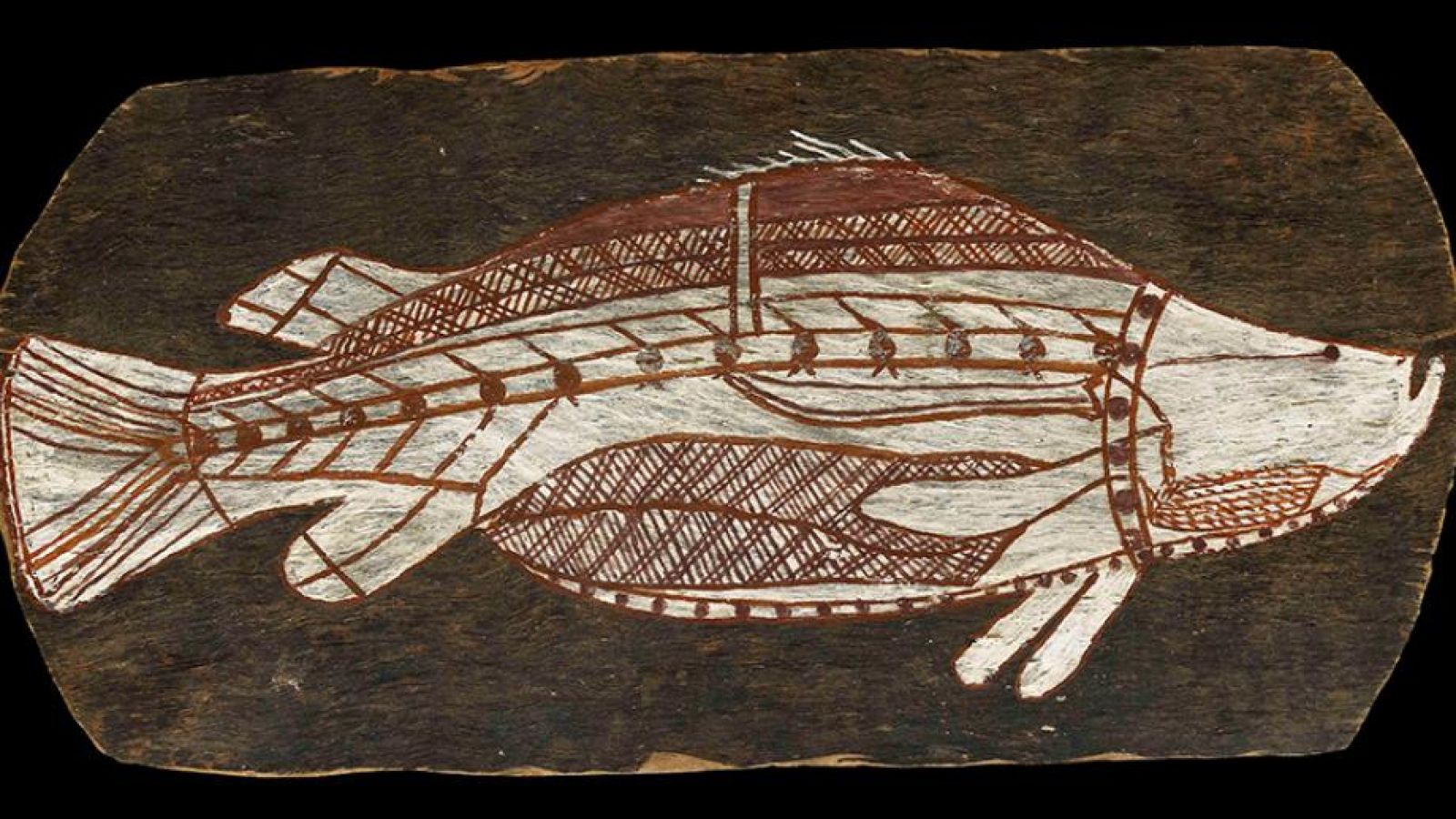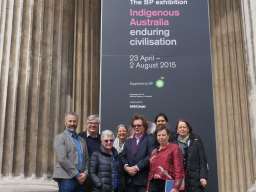Indigenous culture takes the spotlight at the British Museum

Bark painting of a barramundi. Western Arnhem Land, about 1961 © The Trustees of the British Museum.
Never-seen before Aboriginal artefacts have gone on display at the British Museum in London as part of a new exhibition, Indigenous Australia: enduring civilisations.
The exhibition was officially opened by patron Prince Charles last week, with many Australians, both Indigenous and non-Indigenous, attending. Indigenous Australia is part of a collaborative research project involving the British Museum, the National Museum of Australia (NMA) and ANU researchers.
Although it has already sparked some controversy around the issue of repatriation, Dr John Carty, who has worked on the project for a number of years, said the exhibition was an opportunity to show Australian Indigenous culture to a wider audience.
"I think there's an extraordinary story to tell about Aboriginal Australia that most of the world has no idea about," Dr Carty said.
"This is a high profile and important opportunity for the world to pay attention to what is one of the world's great civilisations.
"There'll be lots of debates about repatriation, which is an important debate to have, but it would be a real shame if those debates were the only focus."
The exhibition is the first in the UK to present a history of Indigenous Australia through objects. Many objects on display were collected during the early colonial period of Australia between 1770 and 1850.
The show also incorporates items on loan from Australian museums. Indigenous Australians from many communities have contributed to the exhibition, providing information, advice and permissions.
Curator Gaye Sculthorpe worked closely with ANU researchers in developing the show, which is part of Engaging Objects, a four-year Linkage Project funded by an Australian Research Council grant. The research team comprises Professor Howard Morphy (ANU), Dr Lissant Bolton (British Museum), Dr Ian Coates (NMA), Dr John Carty (ANU) and Dr Maria Nugent (ANU).
A version of the exhibition will travel to the NMA in November this year.
The show at The British Museum runs until 2 August 2015.


